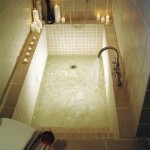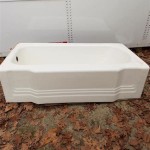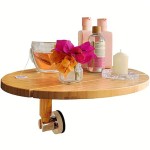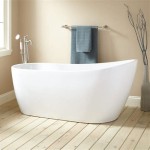Bathtub Surround Walls: Enhancing Functionality and Aesthetics
Bathtub surround walls are an essential element of any bathroom, not only providing a practical barrier between the tub and its surroundings but also contributing significantly to the overall design and ambiance of the space. Understanding the various aspects of bathtub surround walls can help you make informed choices that meet your functional and aesthetic requirements.
## Material ConsiderationsBathtub surround walls come in a wide range of materials, each with its own unique advantages and drawbacks:
-Acrylic:
Durable, lightweight, and available in a variety of colors and textures, acrylic is a popular choice for its ease of installation and maintenance. -Ceramic Tile:
Timeless and customizable, ceramic tile offers a vast array of colors, patterns, and finishes, making it suitable for any bathroom style. -Glass:
Modern and elegant, glass surround walls provide a clear and expansive view, enhancing the sense of space. -Natural Stone:
Luxurious and durable, natural stone such as marble or granite adds a touch of sophistication to the bathroom. -Fiberglass:
A budget-friendly option, fiberglass surround walls are easy to clean and resistant to mold and mildew. ## Design FeaturesIn addition to material choice, there are several design features to consider when selecting bathtub surround walls:
-Height:
Standard surround walls typically measure around 42 inches in height, but taller walls can provide additional splash protection. -Length:
Surround walls should extend beyond the edges of the bathtub to prevent water from splashing onto the floor. -Shape:
Straight surround walls are the most common, but curved or angled walls can create a more dynamic and stylish look. -Color and Texture:
The color and texture of the surround walls should complement the overall bathroom decor, from the fixtures to the paint. ## Installation MethodsBathtub surround walls can be installed in several ways:
-Over the Tub:
Surround walls that are installed over the bathtub are the simplest and most affordable option. -Under the Tub:
Installed beneath the bathtub, these surround walls provide a more seamless and integrated look. -Shower-Tub Combination:
For bathroom spaces that feature both a bathtub and shower,専用の shower-tub surround walls can be installed. ## Maintenance and CleaningProper maintenance and cleaning are essential to preserving the longevity and appearance of bathtub surround walls. Regular cleaning with a mild detergent and warm water will suffice for most materials. Avoid using harsh chemicals or abrasive cleaners, as these can damage the surface.
## ConclusionBathtub surround walls are a crucial component of any bathroom, combining functionality and aesthetics. By considering material, design, installation method, and maintenance, you can create a surround wall that complements the bathroom's style and enhances its functionality.

Bath Surrounds Wall Bathtub Walls Planet

Wetwall 30 In X 60 72 Vienna Marble 4 Piece Bathtub Wall Panel Kit The Walls Surrounds Department At Com

Delta Distinction 60 In W X H Three Piece Glue Up Tub Surrounds High Gloss White 39094 Hd The Home Depot

White Bathtub Walls Surrounds At Com

39964 Avondale Bathtub Wall Set 5 Piece

Best Materials For Bathtub Surrounds Jacuzzi Bath Remodel

39094 Hd Bathtub Wall Set

Maxx Utah 102573 000 129 5 Piece Bathtub Wall Kit 59 61 In L X 31 32 W H

Mansfield Nextile 30 In X 60 White 4 Piece Bathtub Surround Com Walls Wall Paneling

Maax Finesse White Polystyrene Bathtub Wall Surround 61 In X 34 59 Rona








